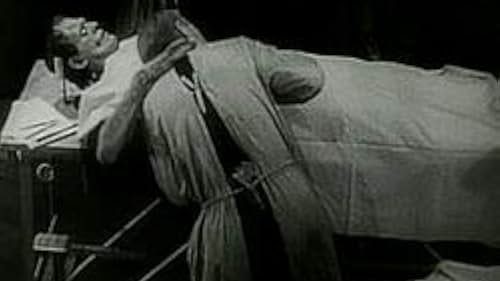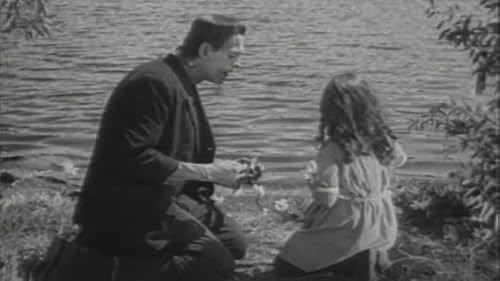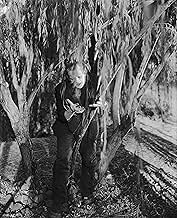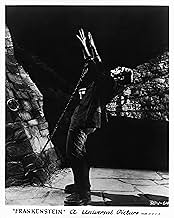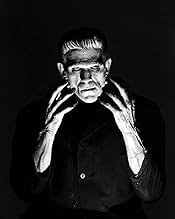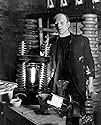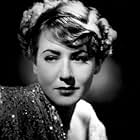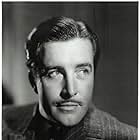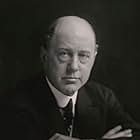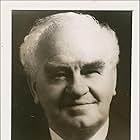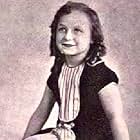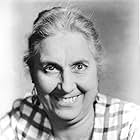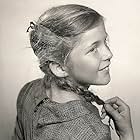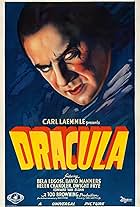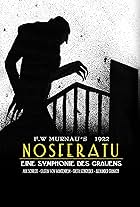Uno scienziato ossessionato assembla un essere vivente da parti di cadaveri riesumati.Uno scienziato ossessionato assembla un essere vivente da parti di cadaveri riesumati.Uno scienziato ossessionato assembla un essere vivente da parti di cadaveri riesumati.
- Premi
- 4 vittorie e 3 candidature
Ted Billings
- Villager
- (non citato nei titoli originali)
Mae Bruce
- Screaming Maid
- (non citato nei titoli originali)
Jack Curtis
- Villager
- (non citato nei titoli originali)
Arletta Duncan
- Bridesmaid
- (non citato nei titoli originali)
William Dyer
- Gravedigger
- (non citato nei titoli originali)
Francis Ford
- Hans
- (non citato nei titoli originali)
Soledad Jiménez
- Mourner
- (non citato nei titoli originali)
Carmencita Johnson
- Little Girl
- (non citato nei titoli originali)
Seessel Anne Johnson
- Little Girl
- (non citato nei titoli originali)
Trama
Lo sapevi?
- QuizThe Monster's make-up design by Jack P. Pierce is under copyright to Universal through the year 2026 and licensed by Universal Studios Licensing, Inc.
- BlooperAccording to DVD commentary for this film, director James Whale intended this film to take place in an "alternate universe" and therefore freely mixed 19th Century and 1930s technology, hair fashions, etc.
- Citazioni
Henry Frankenstein: Look! It's moving. It's alive. It's alive... It's alive, it's moving, it's alive, it's alive, it's alive, it's alive, IT'S ALIVE!
Victor Moritz: Henry - In the name of God!
Henry Frankenstein: Oh, in the name of God! Now I know what it feels like to be God!
- Curiosità sui creditiIn the opening credits: The Monster - ?
- Versioni alternativeSPOILERS: The picture was scripted and filmed with Dr. Frankenstein seeming to die in the mill with his creation, but was instead released with a hastily re-shot happy ending, wherein Henry survives to marry Elizabeth (see "Trivia"). However, the sequel, La moglie di Frankenstein (1935) literally followed the first scenario, and consequently just before "Bride" opened this film was reissued with the original finale restored. This movie was seen this way in all subsequent theatrical releases of the old Hollywood era, but when the entire package of classic Universal horror films was made available to television in the 1950s, the prints of the original movie carried the happy ending, and the incompatibility with the opening scene of "Bride..." confused new viewers.
- ConnessioniEdited into Boo (1932)
Recensione in evidenza
A brilliant young scientist creates life from the dead but lives to regret it when his creation goes on the rampage.
Though inevitably dated and primitive by modern standards, Frankenstein remains a tremendously impressive film and a tribute to its still somewhat under-rated director, the eccentric Englishman James Whale.
Where so many early talkies were static and wordy, Frankenstein skips unnecessary dialogue and exposition and drives through its plot at a speed that seems almost indecent nowadays. Compared to overblown remakes like Kenneth Branagh's 1994 version, Whale's work now seems like a masterpiece of brevity and minimalism. His constantly moving camera, incisive editing and dramatic use of close-ups are a mile ahead of anything far more prestigious directors were doing at the time. Expressionist photography and eccentric set designs lend atmosphere, menace and help augment some rather ripe performances; a foretaste of the paths Whale would tread in the sequel Bride of Frankenstein four years later.
And then of course there's Karloff. With comparatively few scenes and no dialogue he nonetheless manages to create a complex, intimidating, yet sympathetic creature - one of the great mimes in talking cinema and thanks in no small degree to the freedom given to him under Jack Pierce's iconic make-up.
A historic piece of cinema, and one that still stands the test of time as both art and entertainment.
Though inevitably dated and primitive by modern standards, Frankenstein remains a tremendously impressive film and a tribute to its still somewhat under-rated director, the eccentric Englishman James Whale.
Where so many early talkies were static and wordy, Frankenstein skips unnecessary dialogue and exposition and drives through its plot at a speed that seems almost indecent nowadays. Compared to overblown remakes like Kenneth Branagh's 1994 version, Whale's work now seems like a masterpiece of brevity and minimalism. His constantly moving camera, incisive editing and dramatic use of close-ups are a mile ahead of anything far more prestigious directors were doing at the time. Expressionist photography and eccentric set designs lend atmosphere, menace and help augment some rather ripe performances; a foretaste of the paths Whale would tread in the sequel Bride of Frankenstein four years later.
And then of course there's Karloff. With comparatively few scenes and no dialogue he nonetheless manages to create a complex, intimidating, yet sympathetic creature - one of the great mimes in talking cinema and thanks in no small degree to the freedom given to him under Jack Pierce's iconic make-up.
A historic piece of cinema, and one that still stands the test of time as both art and entertainment.
- oldreekie546
- 22 mag 2003
- Permalink
I più visti
Accedi per valutare e creare un elenco di titoli salvati per ottenere consigli personalizzati
Dettagli
- Data di uscita
- Paese di origine
- Sito ufficiale
- Lingue
- Celebre anche come
- Frankenštajn
- Luoghi delle riprese
- Malibou Lake, Agoura Hills, California, Stati Uniti(creature and young girl by the lake scene)
- Azienda produttrice
- Vedi altri crediti dell’azienda su IMDbPro
Botteghino
- Budget
- 291.000 USD (previsto)
- Lordo in tutto il mondo
- 1.626 USD
- Tempo di esecuzione1 ora 10 minuti
- Colore
- Mix di suoni
- Proporzioni
- 1.37 : 1
Contribuisci a questa pagina
Suggerisci una modifica o aggiungi i contenuti mancanti

Divario superiore
What was the official certification given to Frankenstein (1931) in Mexico?
Rispondi
